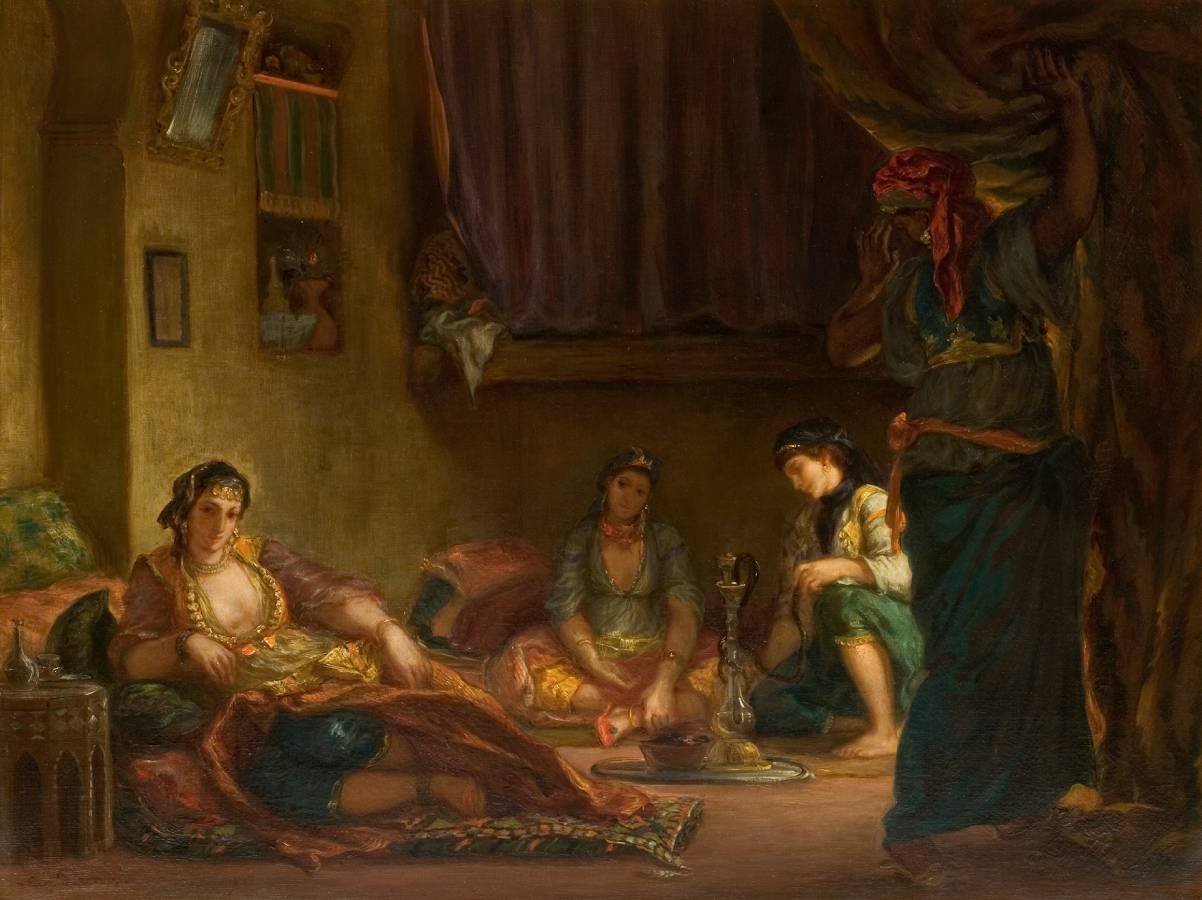Delacroix, Eugène (1798-1863)
Femmes d’Alger dans leur intérieur (Women of Algiers in their interior)
1849
Oil on canvas, 85 × 112 cm
Musée Fabre, Montpellier
Paris, entrusted by the artist to the silver statue lottery, around September 1849; acquired from this lottery by Alfred Bruyas (1821-1877), for 1500 fr., December 1849; gift from Alfred Bruyas to the Fabre museum, 1868.
During his stay in Morocco, Delacroix was authorized to enter the harem of the former Rais du dey of Algiers. Fifteen years after the first version in the Louvre, he created this peaceful composition, where the picturesque gives way to the nostalgic evocation of these inaccessible women.
With the purchase in 1849 of this masterpiece presented at the Salon of the same year, Bruyas strengthened his reputation and gained a new stature. We do not know exactly the circumstances which pushed Delacroix to once again take up this theme which had caused a sensation during the Salon of 1834 with the famous painting now kept at the Louvre museum. The artist, frustrated in his desire to observe Muslim women, was finally able, during his return trip from Morocco in June 1832, to enter the harem of the former raïs of the dey of Algiers. The painter is fascinated by the beauty of the women and the richness of the decor and, as reported by a witness, declared: “It’s beautiful! It’s like in Homer‘s time! The woman in the gynoecium taking care of her children, spinning wool or embroidering wonderful fabrics. This is woman as I understand her! » From this visit, Delacroix brought back abundant material of drawings and watercolors which he used for the execution of the two versions.
The painting acquired by Bruyas, of a smaller format, retains the same number of figures but accentuates the theatrical effect thanks to the servant on the right, against the light, who lifts a heavy curtain letting in the light coming from the right. Delacroix simplifies the decor and rebalances the scene which appears more static and classic. With the hindsight of time, the artist offers an evocation sublimated by the dream of the scene seen around fifteen years previously. A warm and unreal light surrounds beings and objects with a delicate sfumato in the manner of Correggio, as Bruyas noted. The women, not very differentiated, seem plunged into a sort of meditative torpor and, as Baudelaire wrote in his Salon of 1846 about the first version: “This little interior poem, full of rest and silence, [ …] guides us quite quickly towards the unfathomable limbo of sadness.» (FABRE)
Compare:
 Delacroix, Eugène (1798-1863)
Delacroix, Eugène (1798-1863)
Femmes d’Alger dans leur appartement
1834
Musée du Louvre, Paris
